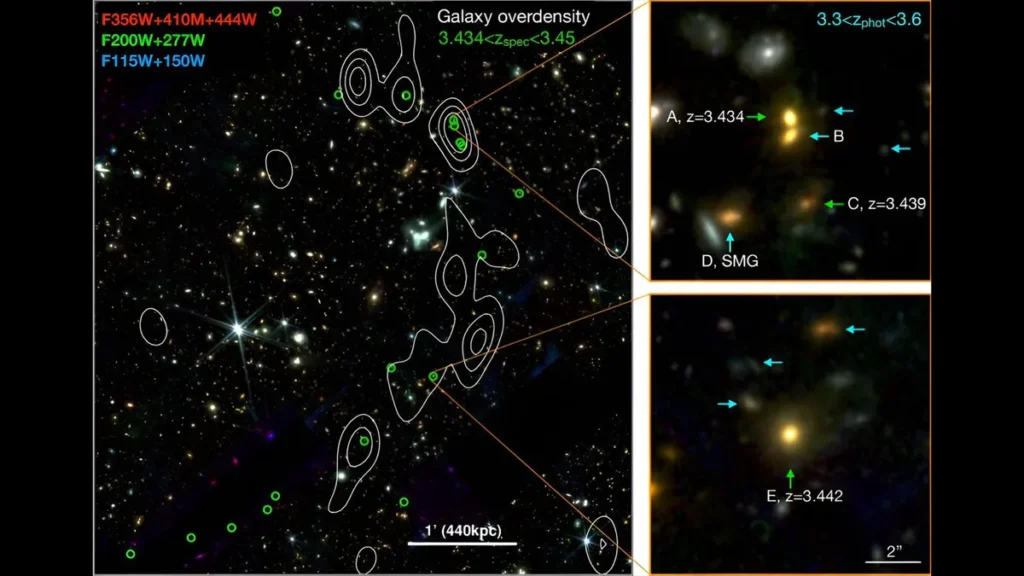The James Webb Space Telescope (JWST) has unveiled a colossal structure in the early universe, a massive chain of at least 20 closely packed galaxies, named the “Cosmic Vine.”

This discovery, detailed in a study published on November 8, 2023, in the preprint database arXiv, offers a new perspective on the formation of the largest structures in the cosmos.
Unraveling the Mysteries of Cosmic Vine
The Cosmic Vine, estimated to stretch over 13 million light-years in length and about 650,000 light-years in width, is significantly larger than other galaxy groups observed so early in the universe’s history. For context, our Milky Way galaxy spans about 100,000 light-years in width. This vast tendril of gas and galaxies was detected in the Extended Groth Strip, an area located between the constellations Ursa Major and Boötes, through JWST observations focusing on redshift—a measure of how light increases in wavelength as it travels through the expanding universe.
A Glimpse into the Early Universe
The galaxies observed in the Cosmic Vine showed a redshift of roughly 3.44, indicating that the light emitted by these objects traveled between 11 billion and 12 billion years before reaching JWST’s lens. This places the Cosmic Vine’s formation at a significant portion of our 13.8 billion-year-old universe’s lifetime, adding it to a growing list of surprisingly huge structures discovered by JWST in the early universe.
The Evolution of the Cosmic Vine
The Cosmic Vine appears to be on its way to becoming a galaxy cluster, the most massive structures in the universe bound together by gravity. With an estimated mass of about 260 billion solar masses, the Vine is still growing. However, its two largest galaxies have almost ceased star formation, designated as “quiescent” or “quenched” galaxies. This cessation of star formation at such an early cosmic time is unusual and may be due to recent galactic mergers, triggering bursts of star formation that depleted most of the galaxies’ available gas.
Implications and Future Research
This discovery by JWST raises more questions about the nature of our universe than it answers. The Cosmic Vine’s existence challenges our understanding of the formation and evolution of the largest structures in the cosmos. Further study is needed to unlock the mysteries behind this ancient galactic chain, offering a unique window into the early universe’s dynamics.
Reference(s): Research paper

